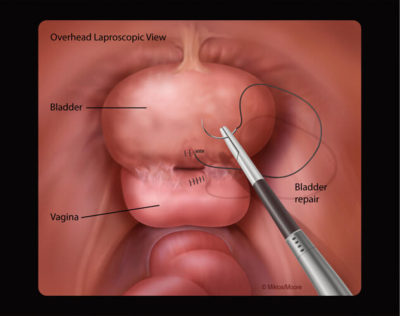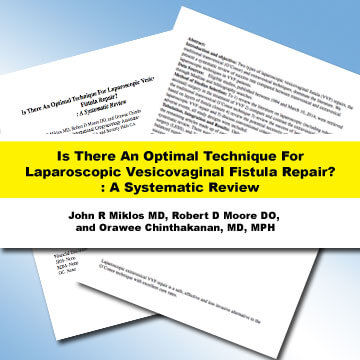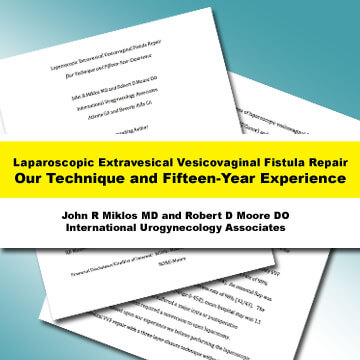Welcome to the most experienced laparoscopic vesicovaginal fistula repair surgeons in the world. Drs. Miklos & Moore are undeniably the most experienced and foremost authorities of laparoscopic vesicovaginal fistula (VVF) repairs.
In 1998 Miklos & Moore Urogynecology were the second surgical team in the world to report on laparoscopic VVF repair and today their experience is beyond reproach. They have a documented cure rate of 98% with an average hospital stay of 1 day and an average blood loss of less than 1 tablespoon. They have truly perfected the laparoscopic VVF repair whether they are patients with new fistulas or those with failed VVF repairs by other surgeons. VVF patients of Drs. Miklos & Moore have flown to the U.S.A. from Hong Kong, Nigeria, Hawaii and St. Johns Island for their successful fistula repair. These patients believed in and were rewarded for flying half way around the world for Drs. Miklos & Moore’s surgical expertise.
Drs. Miklos & Moore have written two of the most important research articles in the world of laparoscopic VVR repairs. The first article published in 2015 about their 15-year experience of performing laparoscopic VVR repairs and the second article is the most comprehensive review in the world on laparoscopic and robotic VVF repairs.
VESICOVAGINAL FISTULAS
Vesicovaginal fistulas also known as bladder fistula, is an abnormal passage between the bladder and the vagina. This passage is usually the results of previous surgery such as a hysterectomy, vaginal surgery or a sling. The fistula can also be the results of cancer and radiation therapy, cesarean section or obstetrical trauma.
SYMPTOMS
Patients usually complain of continuous urinary leakage or leakage without sensory awareness. Continuous leakage means it is not associated with cough, sneeze or urge it just seems to be continuous and unrelenting urine leakage. Without sensory awareness means there is no sense of urgency to run to the bathroom, the urine just seems to run out.
TREATMENT
Dr. Miklos and Dr. Moore have more experience than anyone in the world performing laparoscopic vesicovaginal fistula repairs. Bladder fistulas have been traditionally repaired through larger abdominal incisions known as laparotomies. Laparoscopic (small incision) surgery offers distinct advantages such as less pain, better visualization, higher cure rates (in the right surgeons hands), less blood loss and faster recovery. Drs. Miklos and Moore can repair fistulas with greater detail and complete visualization laparoscopically compared to the vaginal or abdominal approach used by most other surgeons.
Vesicovaginal Fistula
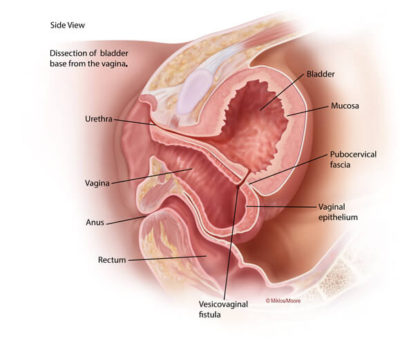
Locating the Fistula
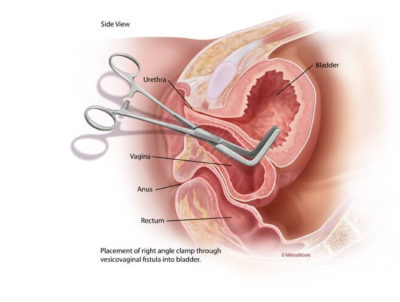
Stenting of Fistula
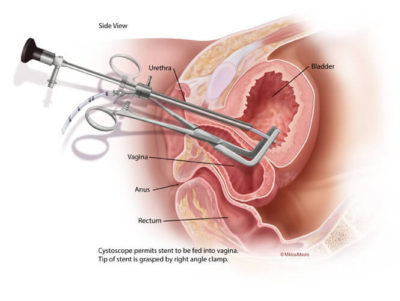
Final Placement of Stent in Fistula
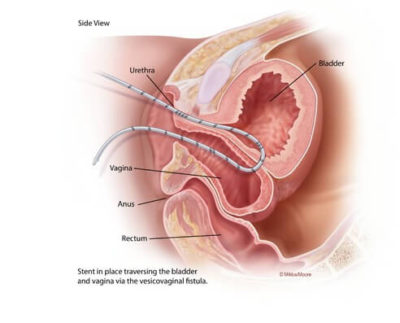
Laparoscopic dissecting
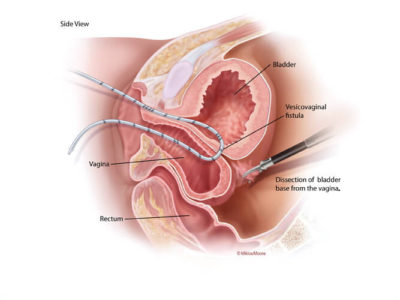
Laparoscopic Dissecting
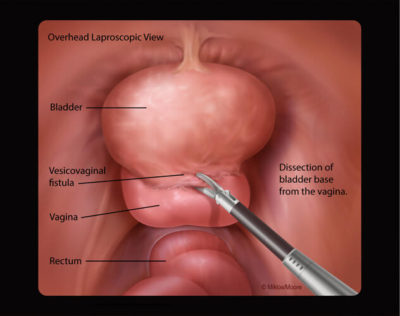
Identifying fistula tract
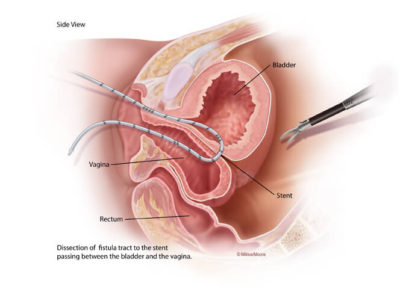
Identifying fistula tract

Identifying fistula tract
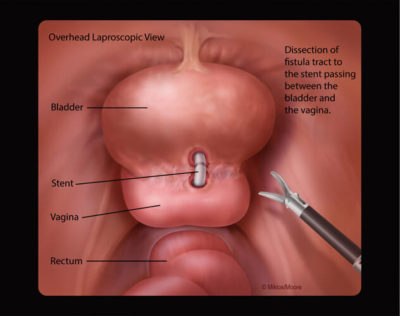
Fistula Repair – Closure of Vagina
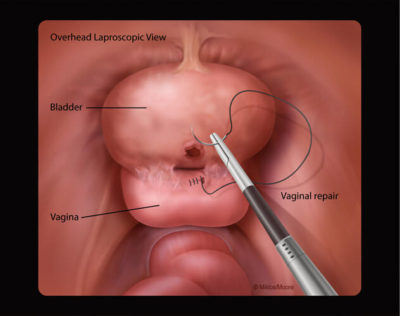
Fistula Repair – Closure of Bladder
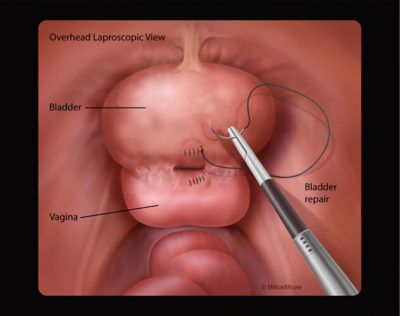
Final closer of bladder
